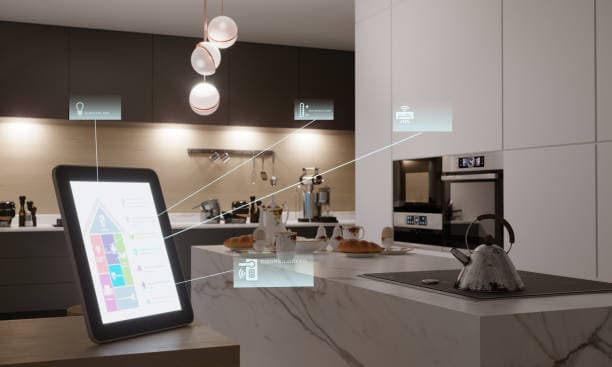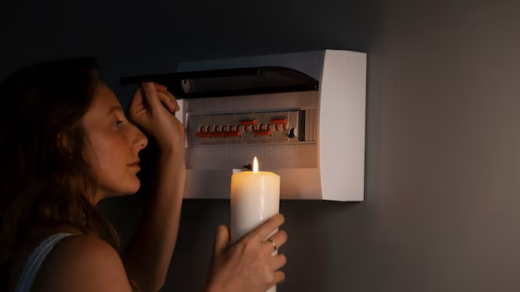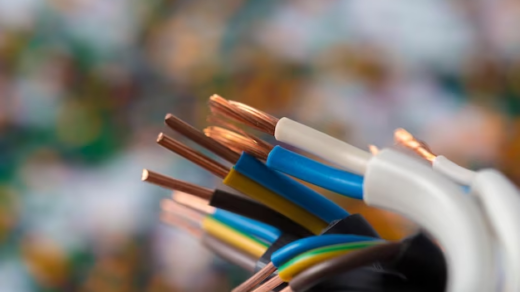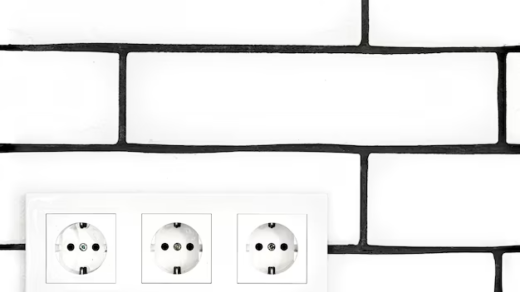Every year, new technological advancements seep further into our daily lives, turning regular houses into intelligent ecosystems with endless possibilities for heightened convenience, security, and energy economy. In this article, we explore the world of modern home electrical systems and look at the key advancements and trends affecting the future design of our houses.
The smart house and automation
Intelligent lighting management
A home’s ambiance and comfort are greatly influenced by its lighting. Present-day smart lighting systems provide a number of cutting-edge features:
- Personalised control: Whether reading, having a candlelit supper, or watching a family movie at home, users can design illumination scenarios that perfectly complement their hobbies. This makes every moment memorable and not only makes the home atmosphere more unique, but it also improves comfort.
- Voice Control: The lighting system can be operated even more conveniently and user-friendly by using voice commands. Because popular voice assistants are integrated, you can change the illumination without getting up from what you’re doing or walking over to the light switch.
- Automation: Not only does this save electricity, but it also makes life easier when lighting is adjusted according to the time of day or amount of natural light. By autonomously adjusting the lighting intensity, the system can minimise energy usage while not in use and create the perfect environment at any given time.
Smart sockets and switches
By offering more options for regulating and managing energy use, smart outlets and switches are crucial in converting conventional homes into smart homes.
- Keeping an eye on energy use: Smart outlets give consumers access to comprehensive data on linked devices’ energy usage, enabling them to spot and unplug “energy-hungry baddies”. This reduces energy expenses and improves the home’s overall energy efficiency, making it more ecologically friendly and climate resilient.
- Remote operate: Users can turn appliances on or off at any time, from any location, by using a smartphone to operate the appliances. For those who are easily distracted and might remember to turn on a light or an iron after leaving the house, this is extremely practical. By enabling users to mimic human presence in the home during vacations or prolonged absences, remote control devices additionally enhance security by serving as a deterrent to potential intruders.
Efficiency in Energy Use and Renewable Energy
Photovoltaic Cells and Batteries
Modern innovations like energy-storage battery systems and solar panels allow homes to become more self-sufficient and energy-efficient.
- Decreased reliance on the grid: By mounting solar panels on a home’s roof, owners can produce power straight from the sun, greatly lowering or even totally removing their need for energy from other sources. This reduces the user’s influence on the environment and allows for significant electricity bill savings, especially in places with high energy costs.
- Backup during blackouts: In the event of a blackout, battery energy storage systems have the ability to instantly connect, ensuring that crucial appliances and systems in the house are always powered. To ensure the safety and comfort of residents in all circumstances, this is particularly crucial in areas that frequently experience power outages or in extreme weather conditions.
Smart thermostats
Modern gadgets like smart thermostats improve how intelligent and flexible home HVAC systems are to the needs of their users.
- Adaptation to habits: It is possible for smart thermostats to “learn” from the individuals who use it on a daily basis. This enables users to enhance comfort while they are home and conserve energy when no one is, by automatically adjusting the temperature in the house. This enhances living comfort while also assisting in cutting back on wasteful energy use and, consequently, energy costs.
- Remote manage: With a smartphone, users may simply adjust the temperature of heating and cooling systems from anywhere in the world. This is particularly helpful for regulating the temperature before leaving for a trip or for monitoring and altering the interior conditions of the house while on vacation or for a lengthy period of time, so that the circumstances are perfect when they return.

Security and Monitoring: An In-depth Look at Modern Technology
Security systems and smart locks
- Access Control: The way we manage who has access to our homes is being revolutionised by smart locks. Residents may open and close doors without actual keys by using a smartphone, offering a level of ease and security never before possible. Access control is made simpler by temporary codes for visitors or support personnel, which removes the need to give out keys and the chance of them being misplaced or duplicated.
- Owners of security systems with integrated cameras can monitor their homes in real time by connecting to the Internet. A smartphone can receive fast notifications of movement or other events, enabling prompt action in the event of any questionable conduct. This feature adds an additional degree of protection by enabling you to keep an eye on your house even when you’re not there.
Water and smoke leak detectors
- Early leak detection: By warning owners of leaks before they cause major damage and expensive repairs, water leak sensors can avert major plumbing issues. By integrating with a smart home, you can minimise flood damage by remotely turning off the water supply.
- Detection of smoke or carbon monoxide: These days, these devices are essential components of a home security system. They save property damage and save lives by providing early notice of fires and carbon monoxide leaks. In order to ensure a prompt and efficient reaction to threats, smart sensors have the ability to automatically alert first responders and send alerts to inhabitants’ mobile devices.
Integration with electric vehicles
The integration of domestic energy systems and electric vehicle charging stations is a crucial element of contemporary sustainable homes. The convenience of having a home charging station is unmatched; it enables owners of electric vehicles to tailor the charging settings to their schedules and demands, which results in more time being spent efficiently and less money being spent on energy. Particularly at night, when electricity prices are frequently lower, is this true.
Moreover, charger integration with renewable energy systems—like solar panels—improves the energy independence of households. Utilising excess energy to charge electric cars maximises the return on investment in renewable energy sources and lessens total reliance on outside energy sources, offering a financially and ecologically responsible means of preserving mobility.
Internet of Things (IoT) and connectivity
Homes are being revolutionised by connectivity and the Internet of Things (IoT) because they allow smart appliances to be integrated and controlled from a single platform. Customers may conveniently control several areas of their home life, including lighting, temperature, and entertainment, using just one app on their smartphone or tablet. The total effectiveness and usability of home appliances are increased by automatic updates and self-ordering capabilities for consumables like dishwasher detergents, which reduce the need for manual labour and maintain equipment functionality.
The development of customised and adaptable home ecosystems that take into consideration each occupant’s unique preferences and behaviours is another benefit of IoT technologies. Through the use of machine learning algorithms, systems may automatically alter parameters such as room temperature and light levels to maximise comfort and energy savings. This adaptive adaptability helps lower energy usage while simultaneously raising living standards to unprecedented levels of efficiency and ease through optimising equipment operation based on consumers’ actual needs.








